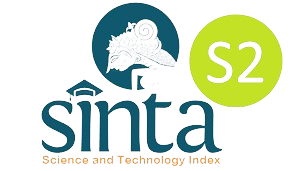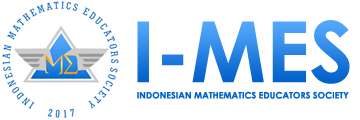Learning trajectory on understanding monetary values for autistic students through a modified monopoly game
DOI:
https://doi.org/10.29408/jel.v11i4.32052Keywords:
autistic students, inclusive learning, learning trajectory, modified monopoly, understanding monetary valuesAbstract
Children with autism spectrum disorder (ASD) often have difficulty understanding abstract concepts, such as monetary values, due to limitations in executive functioning and concept generalization. This study aimed to develop and test a learning trajectory for understanding monetary values through a modified Monopoly game according to the characteristics of autistic students. The study employed a design research approach with validation type, using hypothetical and actual learning trajectory (HLT-ALT) analysis through the stages of preparation, design experiments (pilot and teaching experiments), and retrospective analysis of the data. The research subjects were eight autistic students at the junior high school level at SLB Bina Autis Mandiri, Indonesia. Data were collected through student activity sheets, observations, interviews, and documentation and then analyzed qualitatively. The results showed that the learning trajectory consisting of four activities (playing modified Monopoly, recognizing the value of money, counting the number of pictorial patches of money, and adding up the value of money) effectively helped students gradually understand the concept of monetary value. Game-based activities also increased students' engagement and understanding of the material. This study contributes to a replicable and inclusive learning trajectory that integrates structured gameplay with mathematical reasoning for students with autism.
References
Baron-Cohen, S. (2019). The pattern seekers: How autism drives human invention. Penguin Random House.
Blanco, R., García-Moya, M., & Gómez-Atienza, D. (2024). Design of a mathematical problem-solving application for students with autism spectrum disorder. Educational Technology & Society, 27(2). https://doi.org/10.30191/ETS.202404_27(2).RP09
Bouzas, N. L., Perez, M. E. P., & Fernandez, J. C. (2024). Improved socio-emotional skills in students with autism spectrum disorder (ASD) following an intervention supported by an augmented gamified environment. International Journal of Child-Computer Interaction, 42(1). https://doi.org/10.1016/j.ijcci.2024.100683
Caria, S., Paternò, F., & Santoro, C. (2019). Understanding ASD individuals’ difficulties with managing money: An interactive study. Proceedings of ACM CHItaly Conference(Italy’19)), 1–5. https://doi.org/10.1145/1234567890
CDCP. (2024). Data and statistics on autism spectrum disorder. C. f. D. C. a. Prevention.
Chiang, H. M., & Lin, Y. H. (2007). Mathematical ability of students with Asperger syndrome and high-functioning autism: A review of literature. Autism, 11(6), 547–556. https://doi.org/10.1177/1362361307083259
Clements, D. H., & Sarama, J. (2009). Learning and teaching early math: The learning trajectories approach. Routledge.
El-Sattar, H. A., Mohamed, A. S., & Rashed, S. M. (2024). SALY: A serious game to improve learning outcomes for autistic children. Education and Information Technologies, 29(1), 225–240. https://doi.org/10.1007/s10639-023-11890-1
Geary, D. C. (2013). Learning disabilities in arithmetic: Problem-solving differences and cognitive deficits. Journal of Learning Disabilities, 46(6), 523–533. https://doi.org/10.1177/0022219413479402
Khowaja, K., & Salim, S. S. (2019). Serious game for children with autism to learn vocabulary: An experimental evaluation. International Journal of Human-Computer Interaction, 35(1). https://doi.org/10.1080/10447318.2017.1420006
Kurniawan, A., & Sari, D. (2023). Penggunaan permainan edukatif dalam pembelajaran matematika untuk anak autis [The use of educational games in mathematics learning for children with autism. Jurnal Pendidikan Khusus, 19(1), 45–53. https://doi.org/10.1234/jpk.v19i1.4567
Lestari, R., & Nugroho, T. (2022). Efektivitas media permainan dalam meningkatkan pemahaman konsep nilai uang pada siswa berkebutuhan khusus [The effectiveness of game media in improving the understanding of the concept of money value in students with special needs. Jurnal Inklusi Pendidikan, 14(2), 78–85. https://doi.org/10.5678/jip.v14i2.7890
Lord, C., Elsabbagh, M., Baird, G., & Veenstra-Vanderweele, J. (2018). Autism spectrum disorder. The Lancet, 392(10146), 508–520. https://doi.org/10.1016/S0140-6736(18)31129-2
Mesibov, G. B., Shea, V., & Schopler, E. (2005). The TEACCH approach to autism spectrum disorders. Springer.
MoH. (2022). Autism prevalence report in Indonesia. Ministry of Health.
Moya, M. G., & Blanco, R. (2024). Applications with mathematical content for users with autism. IEEE Revista Iberoamericana de Tecnologías Del Aprendizaje, 19(1), 111–119.
NIMH. (2024). Autism spectrum disorder (ASD) statistics. National Institute of Mental Health.
Putra, A. Y., & Lestari, R. D. (2020). Pengaruh media permainan kartu terhadap kemampuan mengenal nilai uang siswa tunagrahita ringan [The influence of card games on the ability of students with mild intellectual disabilities to recognize monetary values. Jurnal Pendidikan Khusus, 16(2), 112–120. https://doi.org/10.1123/jpk.v16i2.5678
Rahmawati, E., & Sari, M. (2021). Pembelajaran matematika kontekstual melalui permainan untuk siswa autis [Contextual mathematics learning through games for autistic students. Jurnal Penelitian Pendidikan Khusus, 10(1), 55–63. https://doi.org/10.9101/jppk.v10i1.1234
Simon, M. A. (1995). Reconstructing mathematics pedagogy from a constructivist perspective. Journal for Research in Mathematics Education, 26(2), 114–145. https://doi.org/10.2307/749205
Suryani, N., & Hartono, Y. (2023). Pengembangan lintasan pembelajaran matematika untuk siswa autis [Development of mathematics learning pathways for students with autism. Jurnal Matematika dan Pendidikan, 11(3), 200–210. https://doi.org/10.2345/jmp.v11i3.3456
Vallefuoco, E., Bravaccio, C., Pecchia, L., & Pepino, A. (2022). Personalized training via serious game to improve daily living skills in pediatric patients with autism spectrum disorder. IEEE Journal of Biomedical and Health Informatics, 26(7). https://doi.org/10.1109/JBHI.2022.3155367
Verdian, R., Anjani, P. D., & Taufiq, M. (2024). Enhancing financial literacy among autistic students through Money Monopoly-based learning. Indonesian Journal of Special Education, 10(1), 45–56. https://doi.org/10.21009/ijose.v10i1.9876
Wulandari, S., & Prasetyo, B. (2022). Implementasi permainan monopoli dalam pembelajaran nilai pecahan uang bagi anak berkebutuhan khusus [Implementation of monopoly games in teaching fractional values to children with special needs. Jurnal Inovasi Pendidikan Khusus, 8(2), 90–98. https://doi.org/10.6789/jipk.v8i2.2345
Yuliana, R., & Hidayat, T. (2021). Strategi pembelajaran matematika berbasis permainan untuk siswa autis [Game-based mathematics learning strategies for autistic students. Jurnal Pendidikan Khusus, 9(1), 30–38. https://doi.org/10.3456/jpk.v9i1.7890
Downloads
Published
How to Cite
Issue
Section
License
Copyright (c) 2025 Marhamah, Ratu Ilma Indra Putri, Zulkardi, Yusuf Hartono

This work is licensed under a Creative Commons Attribution-ShareAlike 4.0 International License.
Authors who publish with the Jurnal Elemen agree to the following terms:
- Authors retain copyright and grant the journal right of first publication with the work simultaneously licensed under Creative Commons Attribution-ShareAlike 4.0 International License (CC BY-SA 4.0).
- Authors are able to enter into separate, additional contractual arrangements for the distribution of the journal's published version of the work (e.g., post it to an institutional repository or publish it in a book), with an acknowledgment of its initial publication in this journal.
- Authors are permitted and encouraged to post their work online (e.g., in institutional repositories or on their website) prior to and during the submission process, as it can lead to productive exchanges, as well as earlier and greater citation of published work.
Jurnal Elemen is licensed under a Creative Commons Attribution-ShareAlike 4.0 International License





